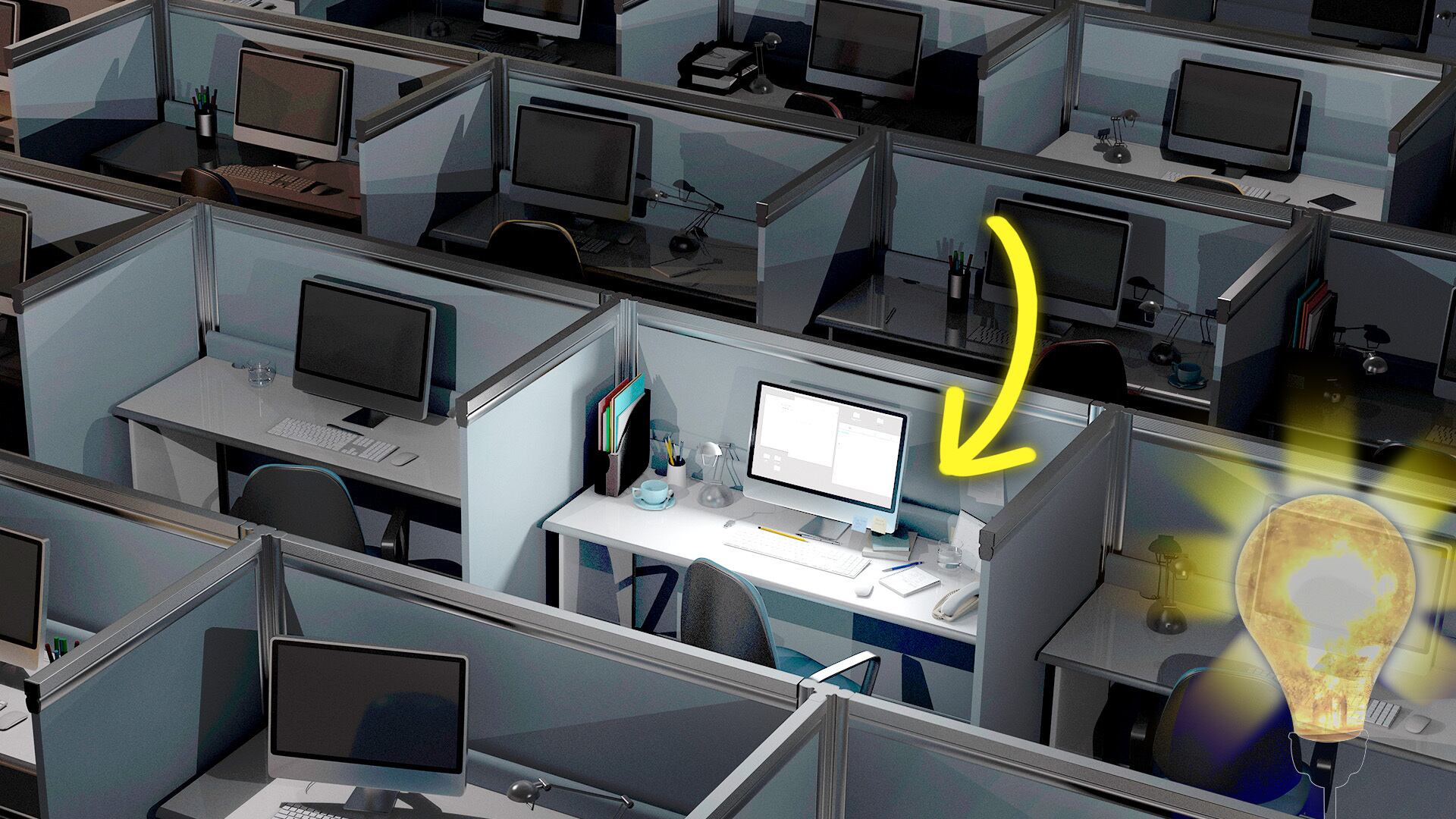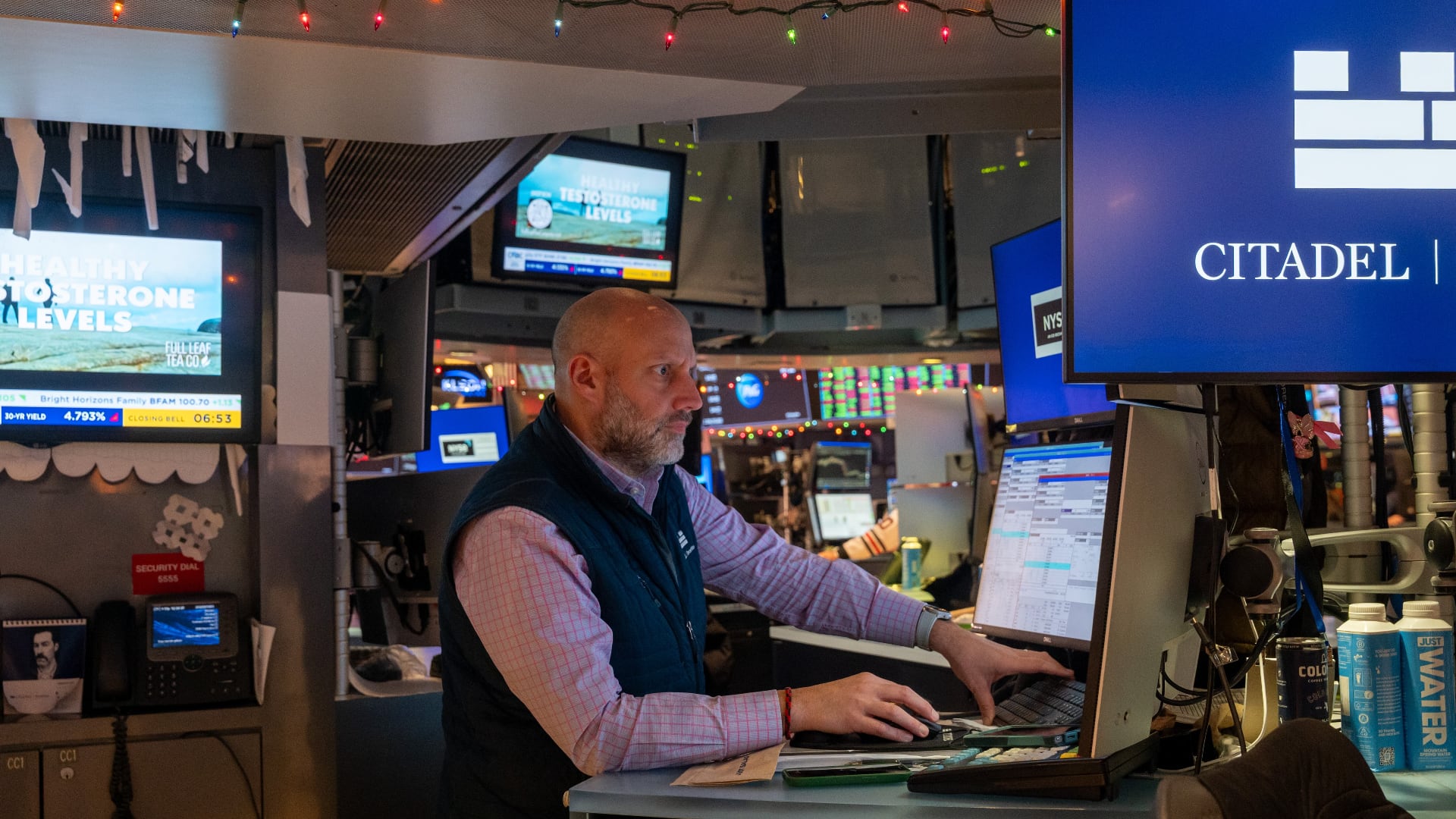The home office has become a sanctuary for productivity as many people continue to work from the place where they live, but with COVID vaccinations ramping up and industries eyeing a return to normalcy, our once standard view of offices could revert back to a phase that peaked in the 1980s and 90s.
We're talking cubicles.
At one point, seeing office spaces with seemingly endless rows of tight-knit working quarters was typical. That is until the open concept came along and transformed working spaces into what many of us know today. The open office concept gained so much popularity that by 2010, 68 percent of offices had adopted the style.
Open Floor Office Concept Emerges
The cubicle, or other types of enclosed spaces, have been noted in history numerous times dating back to medieval monks who used scriptoriums to draft manuscripts].
In the 1800s, the Industrial Revolution saw companies growing quickly, forcing businesses to seek out larger, affordable offices that could accommodate their expanding workforce.
The open floor concept went mainstream in the 1920s after business owners modeled offices after factory floors, complete with open rows of bustling workers and an office manager watching at the helm.
It wasn't until the late 1950s that the traditional office would be reimagined when inventor Robert Propst submitted plans to furniture company Herman Miller Inc.
Propst studied the work environment and based on his assessment, crafted a design that he concluded would boost productivity and office morale by encouraging collaboration among workers. In partnership with designer George Nelson, the two set out to create the Action Office. The design offered an array of rearrangeable office furniture including both a sitting and standing desk and a small coffee table.
Propst claimed the Action Office was good for productivity because it encouraged movement and made it easy to collaborate with other workers; and while the design was attractive to business owners, the price tag was just too high, particularly as costs around expanding the workforce were also increasing.
"It didn't do very well, most likely because it was a little too nice and too expensive, and I think that while the designers were very keen to make this something that was pushing boundaries, something new and innovative, sometimes companies aren't as quick to adopt those types of things," Cotter Christian, associate dean, School of Constructed Environments at Parsons School of Design, told Cheddar.
Though the Action Office failed to take off, George Nelson accepted the Alcoa Industrial Design Award, while failing to mention the other brain behind the new design, in 1965. So, it was back to the drawing board for Propst, but this time he was alone in his quest to create the perfect office.
The Cubicle Is Born
By 1968, his latest concept sprang to life. The redesign consisted of individual private workspaces that came complete with fabric-covered walls that sat at an angle, creating a honeycomb-like layout — but for less cost.
The Action Office II was a hit, sales surged, and other companies even began replicating the design. Propst's use of cheaper materials made the new price point a perfect buy for businesses, and the fact that companies could write off depreciating office furniture was a plus that made buying surplus worth it.
From the 1970s through '90s, versions of the newer Action Office popped up, eventually settling on what we think of as the traditional workplace cubicle. However, the open office concept would quietly begin to reappear in places like Silicon Valley where business leaders thought wall-free spaces promoted even more collaboration and creativity.
Open Floor Concept Comeback
The open floor concept slowly became more commonplace throughout the 2000s, and if you walked into an office after 2010, seeing people in cubicles likely triggered a flashback to the 1998 film Office Space.
"What ends up happening is something very similar to what we saw with the cubicles that says, oh, there's also an economic aspect, like we can cram a lot of people in one open space and it costs a lot less money," Christian noted.
For businesses, the open concept appears more efficient as cost per employee is significantly reduced, but research shows that the concept may actually be counterproductive. A study by the Harvard Business School showed that while collaboration efforts were thought to rise in open offices, counterintuitively, face-to-face interactions dropped by 70 percent, and interoffice emailing surged 50 percent in 2018. Companies also saw a greater number of employees using sick days and reporting that they were unhappy.
"I've been in a number of those offices, and they are, you know, you can hear a mouse because no one's talking because if someone does, you hear everything that they're saying," Cotter Christian said. "It might not work for some."
Ever since humans began working together in collaborative spaces, there appears to have been some iteration of a conflict between private workstations and open concepts. The last 20 years have seen open models slowly take over and flourish, but it seems the scales could be tipping back toward the cubicle.
With COVID's presence in the world likely to linger for some time, walled-off desks that provide a physical barrier between people could have another point in their favor as the decade gets underway.
Video produced by Ed Vega and Andrew Davis. Article written by Lawrence Banton.



